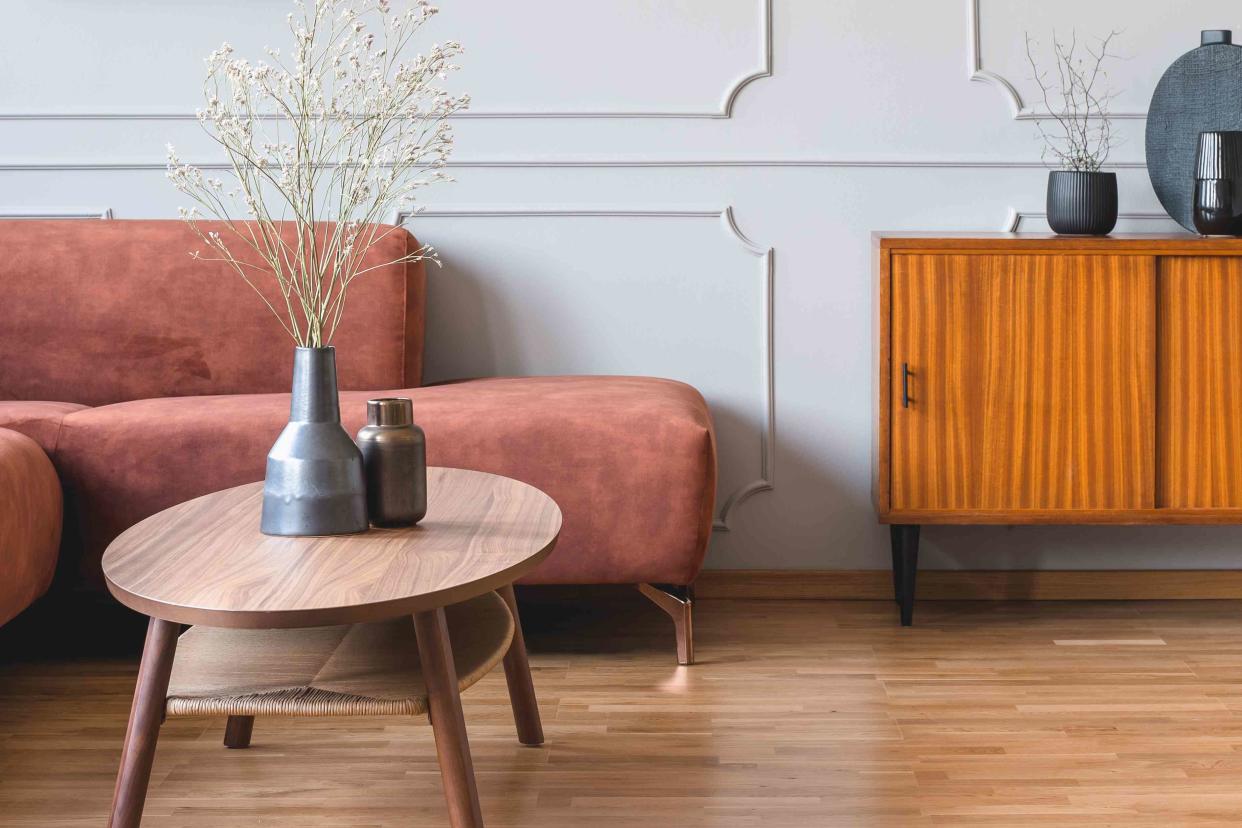How to Successfully Mix Wood Tones in Your Home
Mixing wood tones can add more depth and personality to your space—but there are some guidelines for doing it well.

Katarzyna Bialasiewicz/Getty Images
Incorporating wood accents and features into your interior design is a great way to make your space feel cozy and inviting. In fact, some studies have even found that integrating natural elements, like wood, into your home can have a stress-reducing effect on people in the space. However, if you have several wood tones that are conflicting and competing with each other, it might end up giving you a design headache instead. Too much of the same, on the other hand, can make your space feel too one-dimensional. So, there's an art to mixing and matching wood tones. Here are some expert tips for getting it just right.
Related: The Pros and Cons of Different Types of Wood for Furniture
Say Yes to the Mismatched Look
For starters, let's set the record straight: Yes, it's okay to mix wood tones in your home (even if a design rule somewhere told you it's not). In fact, not only is it okay to do, but the design experts we spoke with actually encourage it. "Mixing woods adds depth and can really warm up a space," Annie Obermann, co-founder and principal designer of Forge & Bow, says. Mismatched wood accents and furniture can also give your home more of a lived-in and personal look, since it's only natural to collect items over time that don't all perfectly match.
On the other hand, homes that don't mix wood tones can end up looking flat. "If you blend all the same tones of wood, it can come across as blah or boring, so it's important to keep in mind the variations of color and grain," Keri Michelle Lainas, owner and principal designer of Keri Michelle Interiors, says.
Build Off Existing Features
Before thinking about decorating with wooden furniture or accent pieces, Lainas says she starts by looking at the dominant wood color in a space. This refers to the wood tone on existing features of your home interiors, like the floors, cabinetry, or exposed beams. "From there, I select additional wood tones that are cohesive together to incorporate," Lainas explains. If you're moving into a new space and starting from scratch with furnishings, this is a great place to start when choosing new wooden pieces to bring into your home. Or, if you're just looking to redecorate or swap out some items in your existing space, consider how your pieces are pairing with the dominant wood tones in your home.
Pay Attention to the Undertones
When it comes to actually determining which wood tones go together and which don't, Lainas and Obermann both say it's important to pay attention to the undertones. "To mix the right wood tones, you have to look for similar undertones," Lainas says. While there are no absolutes, a good rule of thumb for finding wood tones that pair well together is to stay on the same side of the color spectrum. So, if your wood floors have warm undertones, it's best to add in other wood pieces that also have warm undertones, though you can add variety with how light and dark the wood is.
Utilize Samples
While you may think samples are just for choosing paint colors, the experts tell us you should absolutely be using them for pairing wood tones, too. If you know the stain of your existing pieces, you can use that as a reference or you can gather wood samples from a home improvement store and match them to the color of your flooring or other dominant wood tones. You can then bring the wood sample with you when furniture shopping. "If you have a reliable sample you can see which wood combos look good together and which pairs you have a good reaction to," Obermann says. "If you make sure you like the wood samples together, the final application and pair of tones should be pleasing to you as well."
Refresh, Don't Remodel
Sometimes, mixing wood tones is an extra challenge if you don't like the dominant wood tone you're starting with. While completely replacing your wood flooring or cabinets isn't always an option, there are other ways to get a facelift without doing a full remodel. If it's the tone of the flooring that you're unhappy with, try layering rugs to cover the flooring with textiles that better suit your style.
If the cabinets are bothering you, Lainas suggests getting a cabinet reface, rather than opting for brand new. "A skilled cabinet maker can refinish and apply a paint grade finish or wood veneer, which is a less costly option compared to brand new cabinetry," she explains. "When budget is an issue or there is no layout change to the space, this can be a good alternative."
Also, don't underestimate the power of a fresh coat of paint on the walls. Do some research on which paint colors will best complement the existing wood tones in your home and you may find that a new paint color will change your entire perspective.
Related: The All-Time Best Paint Colors, According to Real Simple Home Designers
For more Real Simple news, make sure to sign up for our newsletter!
Read the original article on Real Simple.
